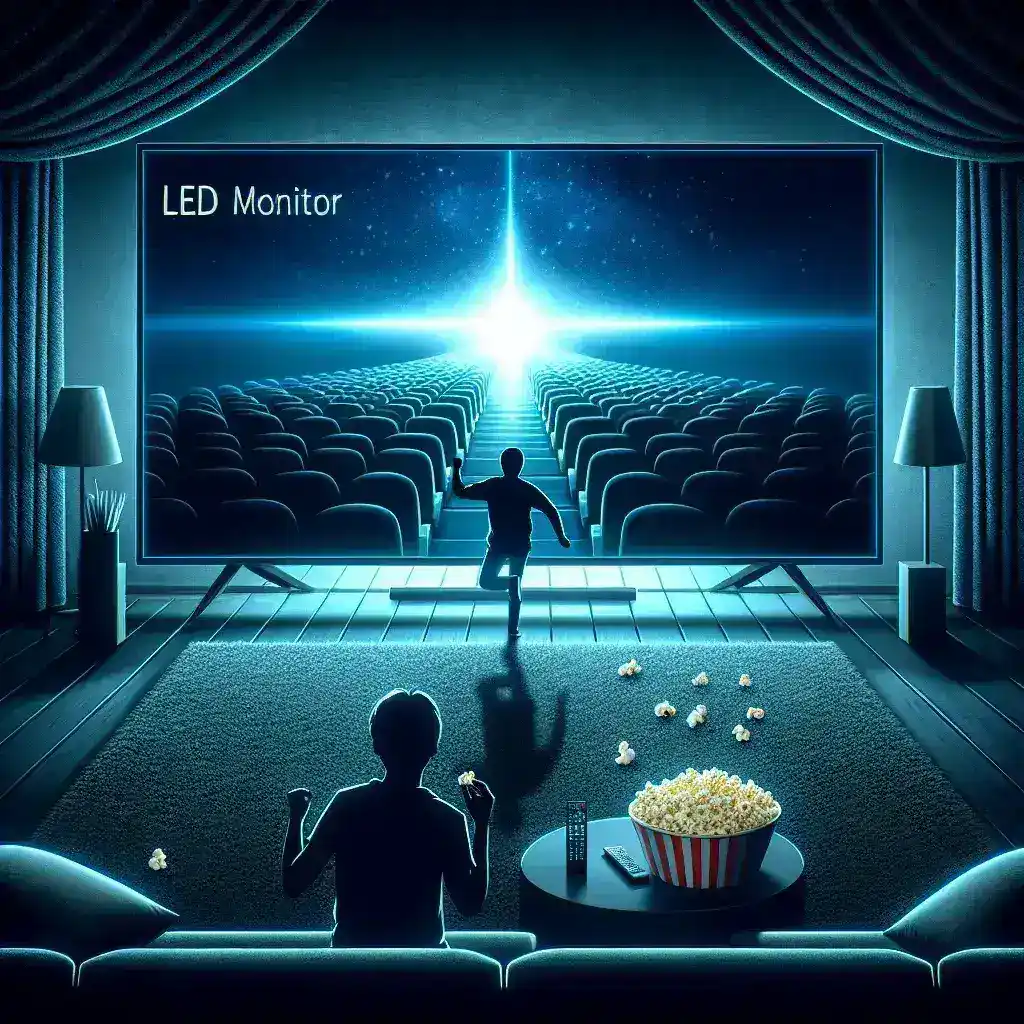How do I optimize an LED monitor for movie watching?

When it comes to enjoying movies at home, your LED monitor’s settings can make all the difference. Optimizing your LED monitor not only enhances the visual experience but ensures you’re getting the most out of your screen’s capabilities. From adjusting basic settings like brightness and contrast to delving into more advanced features, this guide will walk you through the steps to perfect your LED monitor for movie-watching.
Basic Setup for LED Monitors
To start, ensure that your LED monitor is properly set up. This basic setup forms the foundation for further optimizations:
- Placement: Position the monitor at eye level and at a distance where your eyes can comfortably track the entire screen.
- Connections: Use high-quality cables (like HDMI or DisplayPort) to connect your monitor to your movie source, whether it’s a PC, Blu-ray player, or streaming device.
Table of Basic LED Monitor Settings Adjustments
| Setting | Description | Recommended Adjustment |
|---|---|---|
| Brightness | Controls the overall light output. | Adjust to 50-60% based on ambient light. |
| Contrast | Regulates the difference between the darkest and lightest parts of the image. | Set between 70-80% for deeper blacks and brighter whites. |
| Color Temperature | Alters the warmth or coolness of the image. | A setting of around 6500K simulates daylight for natural colors. |
Advanced Adjustments
Gamma Settings
Gamma controls the midtones in the image. A proper gamma setting ensures that shadows and highlights are displayed accurately without loss of detail.
- Optimal Gamma: Set your gamma setting to 2.2 for a balanced picture quality.
Color Calibration
Accurate colors are essential for an immersive movie-watching experience. Calibrating your monitor ensures that colors are displayed accurately and truly.
- Use a color calibration tool or software to fine-tune the colors displayed by your monitor.
- Check for any built-in color presets like “Movie” or “Cinema” mode.
Refresh Rate and Response Time
Higher refresh rates and lower response times contribute to smoother motion and reduced blur, which is important for action-packed movies.
- Refresh Rate: Aim for at least 60Hz for smooth video playback.
- Response Time: Lower response times (5ms or less) help reduce motion blur.
Enhancing the Viewing Environment
Ambient Lighting
The lighting in your room can significantly affect your viewing experience.
- Controlled Lighting: Keep your room darkened or use ambient lighting that does not reflect on the screen.
- Bias Lighting: Use bias lighting behind your monitor to reduce eye strain and enhance perceived contrast.
Sound Quality
Don’t overlook the importance of high-quality sound. Invest in a good sound system or use high-quality headphones for immersive audio.
- Consider using a soundbar or external speakers for better audio quality.
- Ensure proper audio sync with your video source for a cohesive experience.
Software and Firmware Updates
Checking for and installing the latest software and firmware updates can also help optimize your LED monitor.
- Regularly visit your monitor manufacturer’s website to check for updates.
- Update your video drivers for optimal compatibility and performance.
Troubleshooting Common Issues
Color Inaccuracies
If colors appear off, recheck your color calibration and ensure you are using high-quality connection cables.
Screen Tearing and Stuttering
Adjust the refresh rate and enable any available sync technologies (like V-Sync, G-Sync, or FreeSync) to reduce these issues.
Conclusion
Optimizing your LED monitor for movie watching involves a series of careful adjustments and considerations that ensure you get the richest visual and auditory experience possible. Follow these guidelines to transform your space into a mini-theater and elevate your movie nights to a whole new level of enjoyment.
Leave a Reply